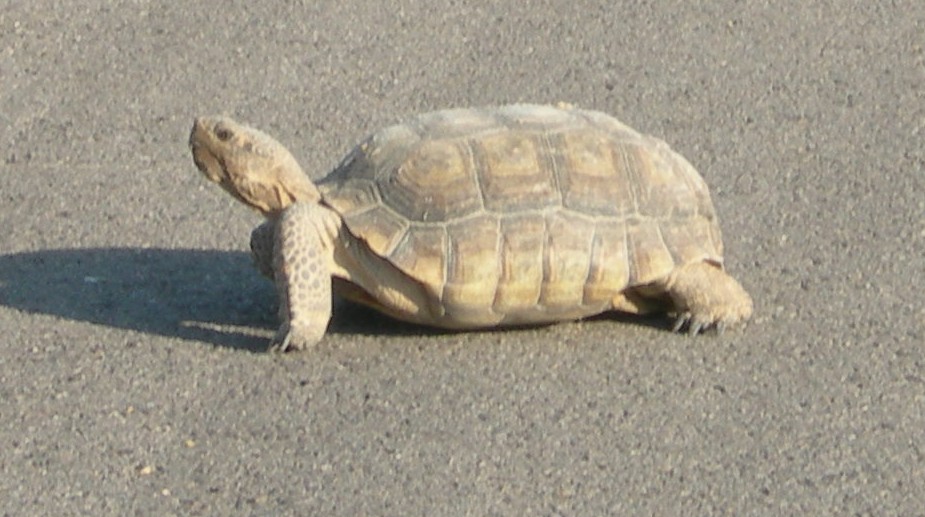Desert tortoise (Gopherus agassizi) – Nevada’s official state reptile, is the only naturally occurring tortoise in the Mojave Desert and is on the U.S. fish and Wildlife Service’s Endangered Species List. Over 6 million acres within the Mojave Desert, including over 1 million acres in southern Nevada, have been designated as critical habitat for the desert tortoise(areas that require special consideration and protection). This special consideration includes construction of tortoise fences in areas where highways or construction sites conflict with the tortoise life-style.
Desert tortoise are quiet and unassuming creatures, they spend most of their lives underground in winter dens and summer burrows where they are protected from the temperature extremes of the Mojave Desert. They are long-lived vegetarians, and are so efficient in their water usage that they can survive for more than a year without access to “free” water ( water derived from sources other than the plants that they eat).Â
The desert tortoise population has been decreasing in recent years throughout the western Mojave Desert. One of the major factors in this decline is thought to be destruction of tortoise habitat by urban development. This is especially critical in areas surrounding Las Vegas where the city is rapidly expanding into prime tortoise habitat.Â
If you are lucky enough to see one of these elusive desert dwellers, DON’T TOUCH OR PICK IT UP.  They tend to lose water if picked up, to the tortoise it could be fatal to lose this stockpiled water.Â
******Â
Note:Â The River Mountains is home to a large population of Desert Tortoise. The River Mountains Loop Trail passes through prime tortoise habitat and they are often seen near or on the trail.


